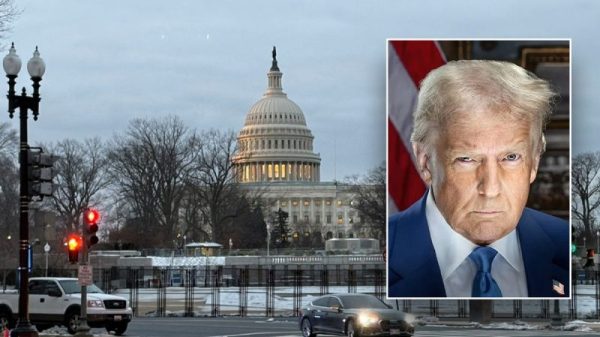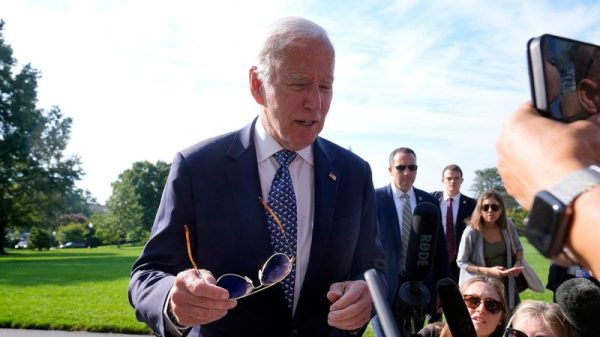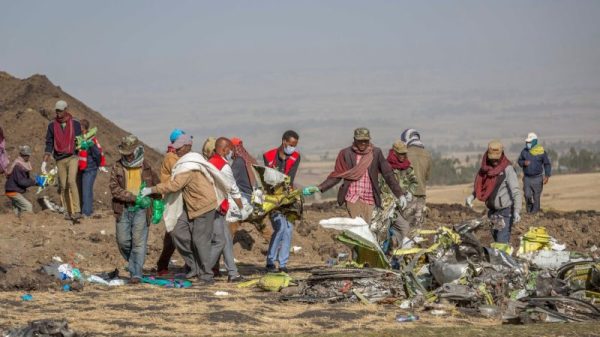It seems that Sen. Mitt Romney (Utah) is poised to reclaim his title as “the Republican most explicit about trying to stop Donald Trump from winning his party’s presidential nomination.”
In March 2016, Romney — then the party’s most recent prior nominee (2012) — gave a speech excoriating Trump as a “con man,” a “phony” and a “fraud.” He publicly opposed Trump’s candidacy repeatedly, engaging in the sorts of skirmishes that have long-defined Trump’s approach to politics. Romney voted for his own wife rather than support Trump in November.
There were two problems with Romney’s effort. The first is that Romney had already been pigeonholed as precisely the sort of pro-establishment, anti-base Republican that Trump’s entire candidacy was oriented against. His speech was preaching to the choir.
The second is that, by early March when Romney gave his speech, Trump was already well ahead in the delegate count. One-time contenders like former Florida governor Jeb Bush had already dropped out. In other words, even if there were Republican voters who still could be convinced that Trump was unfit for office, Trump already had momentum — and the systemic advantage granted to the front-runner in the Republican nominating process. It was already nearly too late.
On Monday, the Wall Street Journal published an opinion piece from Romney in which the senator outlined a strategy for stopping Trump’s advance to the nomination once again.
“Republican megadonors and influencers — large and small — are going to have to do something they didn’t do in 2016: get candidates they support to agree to withdraw if and when their paths to the nomination are effectively closed,” Romney wrote. “That decision day should be no later than, say, Feb. 26, the Monday following the contests in Iowa, New Hampshire, Nevada and South Carolina.”
In other words, Romney is embracing one of the post-2016 assessments of how Trump finagled the nomination: that it was partly because it was assumed that Trump’s campaign would collapse in scandal and that too many alternative candidates stayed in the race, splitting the vote and letting him rack up delegates. Romney’s proposal is to ensure that the non-Trump field is cleared earlier, making it harder for Trump to run the table.
There are three problems with Romney’s new effort.
The first is that this isn’t really how it worked in 2016. Yes, Trump was only getting about a third of the support in primary polls coming into that year’s primaries. But that doesn’t mean that two-thirds of Republicans opposed him. Polling from Fox News over the course of the primary shows that even in July 2015, when he’d just taken over the lead in the field, Trump was the first or second pick of 38 percent of voters, a bit under the 45 percent of votes he ended up receiving overall.
As the primaries unfolded and candidates dropped out, he vacuumed up some of the support those candidates had enjoyed. By January, nearly half the primary electorate made Trump their first or second pick, and, as Trump was finalizing the nomination in April, two-thirds of voters had him in their top two.
It wasn’t until his nomination was all but clinched that Trump began securing more than half the vote in primaries. But it’s not clear that he wouldn’t have passed 50 percent support in January 2016 even if every other candidate had dropped out. The chart above doesn’t include those who had Trump as their third or fourth choice. Nor can it accommodate a scenario in which the nominating contest suddenly features the GOP establishment working to block Trump’s ascent. Such an effort might trigger some new sympathy for Trump’s anti-establishment pitch.
Romney’s plan looks a bit like what happened to Joe Biden in early 2020 as the twin threats of Sen. Bernie Sanders’s (I-Vt.) candidacy and the coronavirus pandemic prompted a number of candidates to drop out and back Biden. Here we get to the second problem with Romney’s plan: The Democratic nominating process is more equitable for candidates than the Republican one. The GOP process disproportionately rewards whoever is leading in the polls, as it did in 2016. Waiting to see which Republican is the most viable non-Trump option means letting Trump build up an early lead in delegates, a risk on its own.
The third problem with Romney’s proposal is that Trump is much better positioned now than he was in 2015 or 2016. Here, for example, is what the first- and second-choice rankings looked like for Republican presidential candidates last month.
Trump has consistently been at or over 50 percent in national polling averages since the beginning of the year, as he is now. In new polling from Fox Business, he’s over 50 percent in the early states of Iowa and South Carolina when you combine first and second choices — but he’s near 50 percent on first-choice alone.
Monmouth University polling released on Tuesday asked voters whom they’d support in a one-on-one matchup between Trump and Florida Gov. Ron DeSantis (R), the sort of matchup that Romney appears to support. Trump got 55 percent of those votes, leading DeSantis by 20 points. In a hypothetical one-on-one matchup against Sen. Tim Scott (R-S.C.), Trump led by 50 points.
These numbers can shift, but they already undermine Romney’s argument. The idea that there is a plurality of Republicans who oppose Trump might have been true in 2016, but there’s no evidence of that now. Consolidating around one candidate seems, at least at this point, like it would not have much effect on Trump’s march to the nomination.
But if you are Mitt Romney, earnestly concerned about nominating Trump for a third time, what other options are at your disposal?
































